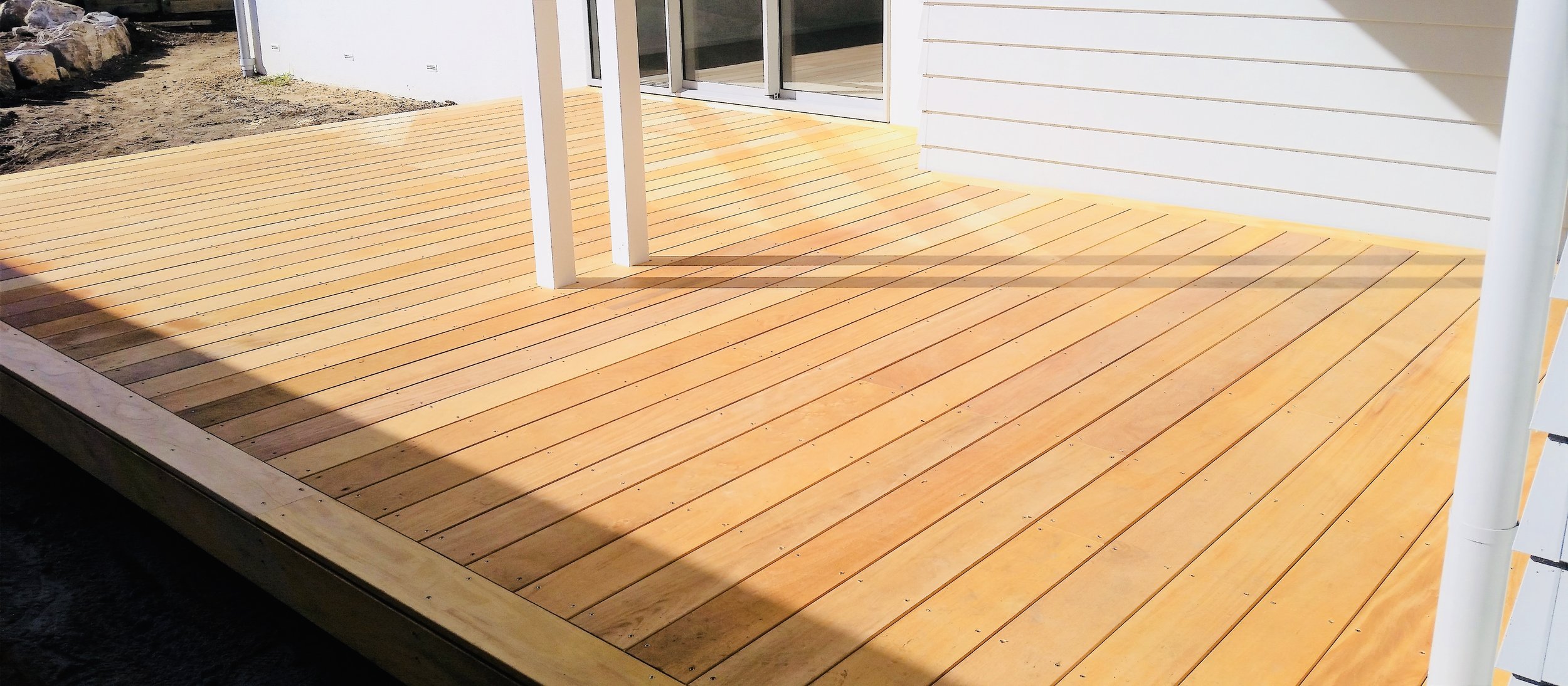
Timber Types
We’re often asked what type of timber is best for decks and other outdoor structures. The answer depends on your lifestyle, your build requirements, budget and many other factors. As a starting point, we’ve listed some pros and cons of the most commonly used timber types in New Zealand. Contact us to further discuss what would be best for your project and budget.
Hardwood Decking
Hardwood decking is extremely durable and hard wearing. Most hardwoods will last for 25 years or more. They look great if they are cleaned and oiled regularly. Not all hardwoods are the same though – some hardwood timbers have a higher density than others and are more suitable for high traffic areas and commercial applications. The main hardwood decking timbers used in New Zealand are Kwila, Vitex, Garapa and Purpleheart.
Vitex is a pale-yellow to creamy-grey timber that fades to grey if left to weather. It’s sourced from low impact village-based operations in the Solomon Islands.
Garapa is sourced from South America and has a warm, honey-coloured tone which will fade to driftwood grey if left to weather.
Kwila, grown in Indonesia and Malaysia, will maintain its rich reddish tones if kept oiled, otherwise it will silver off. Kwila can be prone to leaching.
Purpleheart starts off a rich purple colour which rapidly turns brown then silvers off with time. Purpleheart is one of the strongest timbers in the world.
All of these hardwoods are very dense and require pre-drilling both the mounting hole and the countersink hole. Fixing a hardwood deck down with two stainless screws per joist is the only system we would consider.
Give us a call on 0800 332 547 and we can help you decide if hardwood is a good option for you.
Pine Decking (Softwood)
Pine is a softwood, and is New Zealand’s most commonly used decking and fencing timber.
Pine is the most budget-friendly option for deck building. It’s easy to work with and suits a variety of fixing methods. Pine is produced here in New Zealand, where it can go from a seedling to a tree ready for harvest in just 25 years. Combined with its lower transport footprint this makes it arguably a more sustainable choice.
Because of its lower density, pine generally doesn’t have the life expectancy of hardwoods or composites. It can be susceptible to being marked in high traffic areas. Even kiln dried pine will swell up in the wet winter months and shrink in a hot, dry summer and this will sometimes result in uneven gaps appearing and then closing up again.
To discover whether pine might suit your particular build requirements visit our Contact page or call us on 0800 332 547.
Composite Decking
There are many types of Composite decking on the market, made up of different combinations of components. Typically they contain recycled plastic and recycled timber. In some cases the recycled material will be wood flour, rice husk or peanut hulls. While manufacturers often claim to use recycled plastic this is not always the case. Keep in mind too, that unlike timber, a composite deck is unlikely to be biodegradable at the end of its life and any construction waste will be similarly non-degradable.
Composite decks are very durable, weather resistant, and offer the maintenance-free factor that many people require. They are splinter proof and can be great in commercial applications, high traffic requirements and around pool areas.
It’s important to use the right Composite product and to check the warranty offered – we can talk you through the options.

“Trent was awesome to work with, his workmanship is outstanding and his dedication to the customer is invaluable, the decking looks awesome, thanks Trent it was great to work with you.”
Hendry, September 2022






